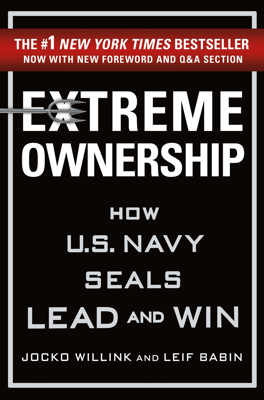Prioritize and Execute
Extreme Combat Scenario and Response
In a perilous environment in Ramadi, Iraq, amidst persistent enemy fire, Leif Babin, the platoon commander, must ensure the safety and success of his SEAL team and allied Iraqi soldiers. They encounter continuous fire, including RPGs and snipers, making their position vulnerable. Despite this, the SEALs effectively return fire and neutralize numerous threats.
Tactical Challenges and Immediate Decisions
Throughout these intense combat exchanges, Babins’ leadership prevails as he consistently surveys their tactical scenario, ensuring no SEALs are injured, and coordinates their defense and attack. When a possible improvised explosive device (IED) is identified near their only exit, a critical decision is needed.
Principle of "Prioritize and Execute"
Faced with multiple simultaneous challenges, including the threat of the IED and needing to evacuate a dangerous position, Babin exemplifies the principle of "Prioritize and Execute." He stresses the importance of staying calm under pressure, assessing the situation, and addressing tasks one by one according to their urgency and impact.
- Establish Immediate Security: The priority is to ensure all team members are safe and able to cover each other.
- Address Mobility Challenges: Next, they focus on creating a safe passage by breaking through barriers and finding alternative escape routes to avoid enemy IEDs.
- Secure a Full Personnel Account: Confirming all members are accounted for before making any critical moves.
- Eventual Safe Extraction: Ensuring safe egress for the team under the cover of darkness to minimize threat exposure.
Practical Application and Business Example
- Business Scenario: Jocko Willink consults with a pharmaceutical company struggling with multiple initiatives and declining revenues. He advises the CEO to apply "Prioritize and Execute" by focusing on the most critical business aspect – improving the effectiveness of the sales force.
- Implementation of Focused Strategy: Under Willink’s guidance, the company concentrates resources and efforts on empowering their sales force, leading to quick and significant improvements in performance.
Conclusion and Broader Implications
"Prioritize and Execute" is a fundamental principle that enhances decision-making under pressure, whether in military combat or corporate management. By addressing tasks methodically and in order of importance, leaders can manage complex situations more effectively and drive significant impacts in their operational objectives. This principle not only ensures better handling of immediate crises but also enhances overall strategic outcomes in dynamic and high-stakes environments.
